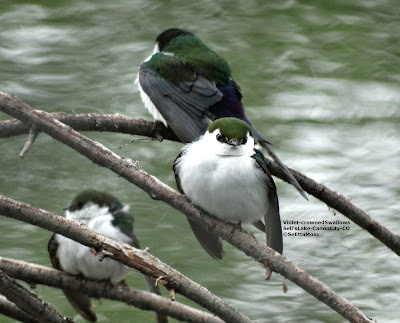'Hurricane Sandy Sweeps Rare Seabird to Cape Wildlife Center'
October 31, 2012
Petrels typically live 30 miles offshore, rarely seen by rehabbers
by Deborah Millman
In addition to loons, gannets, and other commonly-seen seabirds, Hurricane Sandy's blustering winds also blew to shore a rarely seen (and among the tiniest!) seabirds—a storm petrel, now recuperating at Cape Wildlife Center.
A rare bird indeed
"Petrels spend most of their lives on the open sea; they are most often only seen when blown ashore by storms," CWC Medical Director Dr. Roberto Aguilar said. "The birds typically stay at least 30 miles off-shore and are almost never seen on Cape Cod. This is one of the few we've even seen at the Center."
A rescuer had found the seabird close to the shoreline, upside down and struggling in the water, buffeted miles off course by Hurricane Sandy. Arriving at the Center the evening after the hurricane had passed, the little bird was weak and weary.
After stabilizing the small, webbed-footed bird overnight, staff then faced the challenge of keeping the petrel as stress-free as possilble.
Special birds / special needs
"Because petrels almost never step on land, placing them in a standard seabird habitat to recover would be a huge stress on them. They need constant access to large bodies of salt water just to stay normalized," explained CWC Director of Wildlife Rehabilitation Lynn Miller. "Caring for them is among the most challenging tasks for wildlife rehabbers."
"Cape Wildlife Center has a 3,500 gallon saltwater pool and aviary that will suit the petrel well once he is deemed healthy—but, in the meantime, closer quarters are necessary," noted CWC Director Deborah Millman.
The solution? A bathtub.
A little pool for a little bird
Miller oversaw the set-up of the porcelain habitat, customizing the tub with a mirror for company, netting the top to prevent injuries, creating a strength-building diet, and calling for frequent saltwater showers to help the petrel regain his waterproofing.
So far, the temporary oasis seems to be working.
"The petrel is underweight and storm-weary, but seems otherwise healthy," Miller said. "We will monitor his vital signs and provide the rehabilitation he needs to be returned to sea, healthy and strong."
Deborah Millman is director of the Cape Wildlife Center, operated by The HSUS in partnership with The Fund for Animals.
copied from http://www.humanesociety.org/news/news/2012/10/petrel-cape-wildlife-center-103112.html SeEtta


Comments